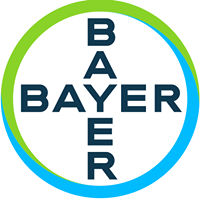预约演示
更新于:2025-05-07
Tinea Versicolor
花斑癣
更新于:2025-05-07
基本信息
别名 Infection by Malassezia furfur、Infection by Pityrosporum furfur、Infection, Malassezia furfur + [41] |
简介 A common chronic, noninflammatory and usually symptomless disorder, characterized by the occurrence of multiple macular patches of all sizes and shapes, and varying in pigmentation from fawn-colored to brown. It is seen most frequently in hot, humid, tropical regions and is mostly caused by MALASSEZIA FURFUR (formerly Pityrosporum orbiculare). |
关联
23
项与 花斑癣 相关的药物作用机制 fungal CYP51A1抑制剂 |
非在研适应症 |
最高研发阶段批准上市 |
首次获批国家/地区 日本 |
首次获批日期2009-05-08 |
作用机制 麦角固醇生物合成抑制剂 |
非在研适应症- |
最高研发阶段批准上市 |
首次获批国家/地区 日本 |
首次获批日期2007-03-22 |
作用机制 fungal CYP51A1抑制剂 |
非在研适应症 |
最高研发阶段批准上市 |
首次获批国家/地区 日本 |
首次获批日期2005-04-11 |
48
项与 花斑癣 相关的临床试验NCT06922344
Comparison of Efficacy of Oral Fluconazole Versus Oral Itraconazole in the Treatment of Pityriasis Versicolor
This study compares the efficacy of two drugs, namely flucanazole and itraconazole for the treatment of a common fungal infection of skin.
开始日期2025-03-01 |
申办/合作机构 |
IRCT20241028063523N4
Comparative efficacy of combined treatment with ketoconazole 2% cream and adapalene 0.1% gel versus ketoconazole 2% cream monotherapy in pityriasis versicolor.
开始日期2024-11-19 |
申办/合作机构- |
IRCT20241028063523N1
Comparative efficacy of bifonazole and clotrimazole in the treatment of pitryasis versicolor
开始日期2024-11-01 |
申办/合作机构- |
100 项与 花斑癣 相关的临床结果
登录后查看更多信息
100 项与 花斑癣 相关的转化医学
登录后查看更多信息
0 项与 花斑癣 相关的专利(医药)
登录后查看更多信息
1,259
项与 花斑癣 相关的文献(医药)2025-05-01·Dermatology and Therapy
Risk of Superficial Fungal Infections in WHIM Syndrome
Article
作者: Meltzer, Jasmine C ; Castelo-Soccio, Leslie ; Martinez, Sophia ; Adhanom, Rutha ; McDermott, David H ; Brownell, Isaac ; Strong, Jennifer ; Salancy, Abigail ; Murphy, Philip M ; Hallaert, Patrick ; Kong, Heidi H ; Kim, Caleb S ; Cowen, Edward W ; Saito, Yoshine
2025-05-01·Diagnostic Microbiology and Infectious Disease
PCR sequencing and re-evaluation of pathologic findings revealed invasive fungal sinusitis caused by Malassezia restricta
Article
作者: Kim, Da Young ; Lim, Sung-Chul ; Lee, You Mi ; Seo, Jun-Won ; Kim, Choon-Mee ; Yun, Na Ra ; Kim, Hyun-Chul ; Kim, Dong-Min
2025-03-18·Skin Health and Disease
Erythematous variant of inverse pityriasis versicolor in skin of colour
Article
作者: Dodeja, Ajay ; Deoghare, Shreya
6
项与 花斑癣 相关的新闻(医药)2025-02-04
来源:企业公告 编辑:wangxinglai2004
近日,4药企分别发布了产品海外上市进展公告,具体为君实生物制剂获澳大利亚批准上市、汇宇制药制剂获爱尔兰上市许可、人福医药制剂获FDA批准文号和东亚药业API获韩国注册证书。
君实生物制剂获澳大利亚批准上市
一、药物基本情况
药品名称:特瑞普利单抗注射液
适应症:特瑞普利单抗联合顺铂/吉西他滨作为转移性或复发性局部晚期鼻咽癌成人患者的一线治疗,以及作为单药治疗既往含铂治疗过程中或治疗后疾病
进展的复发性、不可切除或转移性鼻咽癌的成人患者。
二、药物其他相情况
鼻咽癌是一种发生于鼻咽部黏膜上皮的恶性肿瘤,是常见的头颈部恶性肿瘤之一。2022年鼻咽癌在全球范围内确诊的新发病例数超过12万。特瑞普利单抗是《美国国家综合癌症网络(NCCN)
头颈部肿瘤临床实践指南2025.V1》中推荐用于复发/转移性鼻咽癌全线治疗的唯一首选药物。
本次鼻咽癌适应症的获批主要基于JUPITER-02(一项针对一线治疗鼻咽癌的随机、双盲、安慰剂对照、国际多中心III期临床研究,NCT03581786)及
POLARIS-02(一项针对二线及以上治疗的复发或转移性鼻咽癌的多中心、开放
标签、II期关键注册临床研究,NCT02915432)的研究结果。
汇宇制药制剂获爱尔兰上市许可
一、药物基本情况
药品名称:注射用替考拉宁
剂型:注射剂
规格:200mg;400mg;
适应症:该产品主要用于治疗成人及儿童的肠外感染,例如复杂的皮肤和软组织感染、骨骼和关节感染、获得性肺炎、尿路感染并发症、感染性心内膜炎、持续性流动腹膜透析相关的腹膜炎,以及与上述症状相关的菌血症。该产品亦可用于治疗梭状芽胞杆菌相关的腹泻以及结肠炎。
申请人 :SeacrossPharma(Europe)Ltd.
上市许可号:PA22766/011/001;PA22766/011/002
二、药物其他相情况
注射用替考拉宁主要用于治疗成人及儿童的肠外感染,例如复杂的皮肤和软组织感染、骨骼和关节感染、获得性肺炎、尿路感染并发症、感染性心内膜炎、持续性流动腹膜透析相关的腹膜炎,以及与上述症状相关的菌血症。该产品亦可用于治疗梭状芽胞杆菌相关的腹泻以及结肠炎。
人福医药制剂获FDA批准文号
一、药物基本情况
药品名称:卡马西平缓释片
申请事项:ANDA(美国新药简略申请,即美国仿制药申请。ANDA获得美国
FDA审评批准意味着申请者可以生产并在美国市场销售该产品。)
ANDA批件号:219072
剂型:缓释片剂
规格:100mg、200mg、400mg
药品类型:处方药
卡马西平缓释片适用于治疗癫痫和三叉神经痛。
二、药物其他相情况
宜昌人福于2024年3月提交卡马西平缓释片的ANDA申请,累计研发投入约为2,000万元人民币。
2023年度卡马西平缓释片在美国市场的总销售额约为8,000万美元,主要厂商包括Taro、Unique和Novartis等。
东亚药业API获韩国注册证书
一、药物基本情况
企业名称:浙江东亚药业股份有限公司
地址:中国浙江省三门县浦坝港镇沿海工业城
产品名称:卢立康唑
DMF注册号:수289-24-ND
发证机构:韩国食品药品监督管理局(韩国MFDS)
二、药物其他相情况
卢立康唑用于治疗敏感菌引起的皮肤浅表真菌感染,如足癣、体癣、股癣,也可用于皮肤念珠菌病和花斑癣。
据相关数据显示,卢立康唑乳膏2023年度全国医院销售额约为0.24亿元,2023年度全国药店零售销售额约为0.025亿元。
上市批准申请上市
2024-10-05
·药智网
近期,华润三九与达因药业牵手共推达因药业的维生素D滴剂,给原本由国药星鲨和双鲸药业“双雄”争霸的维生素D滴剂市场带来一些变化。
“双雄”争霸
维生素D是一种脂溶性维生素,一般认为,血清中维⽣素D浓度<30ng/mL,即存在维生素D不足的问题,按照该标准计算,全球超10亿人,中国约80%人口存在维生素D健康问题。
维生素D滴剂是一种常用的可以补充人体维生素D作用的非处方药物,当前,维生素D滴剂市场主要有4家企业参与竞争,包括国药控股星鲨制药(厦门)、青岛双鲸药业、华夏国药(菏泽)制药以及山东达因药业。
目前,国药星鲨、双鲸药业占据了绝大部分市场份额,在2020年之前星鲨和双鲸两家企业垄断市场,据青岛双鲸招股说明书显示,两家企业维生素D滴剂在2015—2017年的复合增长率分别达到了30.96%和48.26%,2017年星鲨制药和双鲸药业的维生素D滴剂分别占据51.54%和48.46%份额(图1)。
图1 星鲨制药和双鲸药业的维生素D滴剂2015-2017年销售额和市场份额
图片来源:青岛双鲸招股说明书
国药星鲨2012年占据98.9%的样本医院市场份额,随后逐年下滑至2021年Q1-3的72.9%,其战略产品星鲨D®维生素D滴剂蝉联五年“中国非处方药产品综合统计排名化学药•维生素类”榜首,并连续两年斩获“中国非处方药黄金大单品”奖,稳居国内OTC市场维生素品类的主导地位。
双鲸药业生产的产品包括维生素D滴剂、天然维生素E软胶囊、维生素AD滴剂、奥美拉唑肠溶片等,其中“悦而”维生素D是其主打产品,市场份额稳步上升,2018年,“悦而”维生素D滴剂中国城市零售药店终端销售额近13亿元,同比增长118.3%。
达因药业的维生素D滴剂于2020年获批上市,2021年拿到许可证,因获批时间较晚,市场占有份额不高,除维生素D滴剂之外,达因药业主要产品还包括维生素AD滴剂(伊可新)、复方碳酸钙泡腾颗粒(盖笛欣)等,其中“伊可新”为全国驰名商标,多年来一直位居同类产品市场占有率第一。
强强联合
达因药业为了扩大其维生素D滴剂市场占有份额,于2024年9月与华润三九在北京达因高科儿童药物研究院签署了维生素D滴剂(胶囊型)产品的战略合作协议。根据协议,华润三九将成为达因维生素D滴剂(胶囊型)产品在中国境内的独家代理商,全面负责维生素D滴剂(胶囊型)的市场推广和全渠道营销工作。
华润三九主要从事医药产品的研发、生产、销售及相关健康服务,主营核心业务定位于健康消费品(CHC)和处方药(RX)领域。CHC业务覆盖了感冒、皮肤、儿科、膳食营养补充剂等近10个品类,其核心产品999品牌多次上榜WPP集团发布的最有价值中国品牌榜榜单,占据了较高的市场份额,此次两大国企强强联手,必会扩大达因药业维生素D市场份额,扰动现有的维生素D滴剂市场竞争格局。
多年来,华润三九一直在进行收并购活动,先后完成安徽金蟾生化、本溪三药、合肥神鹿、双鹤高科等公司的收购,将公司产品线向抗肿瘤中药注射液、胃肠、止咳、儿童用药等领域不断扩展,通过整合行业优质资源,不断提升实力和品牌影响力,在深化健康产业布局的同时,进一步实现业绩增长。
据统计,自2020年以来,华润三九共完成7项收购,总耗资高达122.66亿元,包括2022年末,华润三九以29.02亿元购买华立医药持有的昆药集团27.56%的股份,华立集团持有的0.44%的昆药集团股份以及今年8月,华润三九拟以62.12亿元购买中药民企天士力28%的股份等。
同是中药研发龙头,天士力近年来研发投入也一直居于行业前列,华润三九大手笔并购天士力的一个重要原因,在于后者拥有丰富的在研管线。
此次合作既可以帮助天士力稳固创新中药研发领先地位,又可以帮助华润三九快速提升创新药研发能力、加快补充创新中药管线。
本次交易完成后,天士力的控股股东将由天士力集团变更为华润三九,实际控制人将变更为中国华润。
逆势领航
随着昆药集团自2023年1月19日起纳入合并报表范围,华润三九2023年营收达到247.39亿元,仅次于白云山的755.15亿元、云南白药的391.11亿元,位列中药行业第三。
据2024年半年报显示,华润三九2024年上半年实现营业收入同比增长7.30%至141.06亿元,归母净利润同比增长27.77%至23.98亿元,主要受核心业务CHC(自我诊疗)健康消费品业务增长带动,其CHC上半年营收77.73亿元,同比增长14.00%,毛利率同比增长了5.9%至62.87%。
华润三九是“华润系”底下制药巨头,重视创新研发,上半年研发投入3.92亿元,同比增加了7.29%,主要围绕抗肿瘤、骨科、皮肤、呼吸、抗感染等治疗领域,研发管线包括临床三期用于胃癌根治术患者淋巴示踪的CR999K1601L1、临床二期用于治疗缺血性脑卒中的中药1类新药KYAZ01-2011-020以及临床一期的抗肿瘤药物CR999C1905L1、治疗H3K27M突变型胶质瘤的CR999C2016L1和治疗实体瘤药物KYAH01-2016-079等(图2)。
图2 华润三九研发管线
图片来源:华润三九2024年半年报
今年上半年,华润三九在新品研发、产品力提升等领域取得多项突破,包括盐酸特比萘芬喷雾剂、玻璃酸钠滴眼液获得《药品注册证书》,苓桂术甘颗粒和温经汤颗粒两款经典名方获批上市。
盐酸特比萘芬喷雾剂的注册分类为化药4类,用于敏感真菌所致的手癣、足癣、体癣、股癣及花斑癣等,视同通过仿制药质量与疗效一致性评价,华润三九为该品种国内第二家通过一致性评价的企业。
玻璃酸钠滴眼液(人工泪液)是目前国内干眼症患者用得最多的治疗药物,可替代人体泪液的作用,通常是一类水溶性的高分子聚合物,滴到眼睛局部起到对眼睛黏膜舒缓和润滑作用,从而缓解眼睛干涩的症状。
苓桂术甘颗粒是华润三九研发的首个获批上市的中药经典名方,于今年3月份获批上市,是华润三九在持续推动中药现代化实践中取得的一项标志性成果,随后5月份,华润三九自主研发的另一款经典名方温经汤颗粒获批上市,在探索中药创新发展方面取得的又一项重要成果,将进一步补充公司的中药产品管线。
上半年,昆药集团自主研发的氯硝西泮注射液获得国家药监局签发的《药品补充申请批准通知书》,为同品种中首家申报并通过仿制药质量和疗效一致性评价,进一步丰富公司在神经精神领域管线。
结语
华润三九近些年来动作不断,通过收并购不断整合其资源,推动企业发展,近期通过与达因药业的合作加入国内维生素D滴剂的市场抢夺战,期待两大国企强强联合、共创辉煌。
参考文献
1.青岛双鲸药业招股书
2.《国控星鲨聚焦科技创新助力维生素产业绿色高效发展》,科技日报
3.华润三九2024年半年报
4.《华润三九又一首经典名方“温经汤颗粒”获批上市》,华润三九
声明:本内容仅用作医药行业信息传播,为作者独立观点,不代表药智网立场。如需转载,请务必注明文章作者和来源。对本文有异议或投诉,请联系maxuelian@yaozh.com。
责任编辑 | 史蒂文
转载开白 | 马老师 18996384680(同微信)
商务合作 | 王存星 19922864877(同微信)
阅读原文,是受欢迎的文章哦
上市批准核酸药物
2024-07-10
·米内网
精彩内容
近日,国家药监局接连发布公告,3个独家(含剂型独家,下同)品种获批转换为非处方药,包括同方药业的妇科抗菌药甲硝唑阴道凝胶、华邦制药的皮肤抗真菌感染药萘替芬酮康唑乳膏、以及浙江惠松制药的咽痛治疗药鱼腥草芩蓝合剂。2023年零售药店(城市实体药店+网上药店)终端生殖泌尿系统和性激素类化药、皮肤病化药、五官科中成药合计销售规模分别超160亿元、150亿元和70亿元。
来源:NMPA官网
萘替芬酮康唑乳膏是由1%盐酸萘替芬和0.25%酮康唑组成的复方制剂,属于外用抗真菌药物,临床常用于手癣、足癣、体癣以及花斑癣等各种原因导致的真菌感染。
米内网数据显示,目前萘替芬酮康唑乳膏仅有重庆华邦制药1家企业拥有生产批文,2023年在中国三大终端六大市场(统计范围详见本文末)合计销售额接近1.5亿元,其中在公立医疗机构终端销售额涨幅达22.87%,前景可期。
近年来中国三大终端六大市场萘替芬酮康唑乳膏销售趋势(单位:万元)来源:米内网格局数据库
甲硝唑阴道凝胶是一种治疗细菌性阴道病的药物,可以缓解细菌性阴道病的症状,如白带增多、异味、瘙痒、灼热等,亦可杀灭细菌性阴道病的病原体,如葡萄球菌、链球菌等。
目前,甲硝唑阴道凝胶仅有同方药业1家企业获批生产。近年来,该药在零售药店终端市场规模持续扩容,其中2021-2023年在网上药店终端销售额均保持两位数的同比增速,分别涨逾78%、19%和42%,市场潜力在释放。
近年来中国零售药店终端甲硝唑阴道凝胶销售额增速来源:米内网格局数据库
鱼腥草芩蓝合剂主要由鱼腥草、黄芩、板蓝根、连翘、金银花组成,为纯中药复方口服制剂,功能主治清热解毒,是治疗小儿急性上呼吸道感染、咽喉肿痛的家中常备用药。
在中国三大终端六大市场,鱼腥草芩蓝合剂2023年销售额约为2500万元,其中在网上药店终端的销售额涨幅惊人,高达253.25%。该产品获批转换为OTC药,有望进一步拉动其零售市场的增长。
近年来中国网上药店终端鱼腥草芩蓝合剂销售趋势(单位:万元)来源:米内网中国网上药店药品终端竞争格局
今年以来,NMPA已至少发布10则有关处方药转换为非处方药的公告,共涉及19个品种,其中,中成药占比超过八成;OTC分类上看,甲类药品(含双跨)为主力军,占据18个席位;按治疗大类统计,补气补血类用药、消化系统疾病用药、妇科用药在数量上领跑,各有3个品种在列,包括一力制药的妇血康颗粒、泉州中侨药业的秋水健脾散、广盛原中医药的芪参补气胶囊等独家中成药。
2024年至今NMPA公布的处方药转OTC药名单(注:独家品种用*表示)资料来源:米内网数据库、NMPA官网注:米内网《中国三大终端六大市场药品竞争格局》,统计范围是:城市公立医院和县级公立医院、城市社区中心和乡镇卫生院、城市实体药店和网上药店,不含民营医院、私人诊所、村卫生室,不含县乡村药店;上述销售额以产品在终端的平均零售价计算。数据统计截至7月10日,如有疏漏,欢迎指正!
本文为原创稿件,转载请注明来源和作者,否则将追究侵权责任。投稿及报料请发邮件到872470254@qq.com稿件要求详询米内微信首页菜单栏商务及内容合作可联系QQ:412539092
【分享、点赞、在看】点一点不失联哦
上市批准
分析
对领域进行一次全面的分析。
登录
或

生物医药百科问答
全新生物医药AI Agent 覆盖科研全链路,让突破性发现快人一步
立即开始免费试用!
智慧芽新药情报库是智慧芽专为生命科学人士构建的基于AI的创新药情报平台,助您全方位提升您的研发与决策效率。
立即开始数据试用!
智慧芽新药库数据也通过智慧芽数据服务平台,以API或者数据包形式对外开放,助您更加充分利用智慧芽新药情报信息。
生物序列数据库
生物药研发创新
免费使用
化学结构数据库
小分子化药研发创新
免费使用



